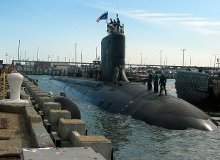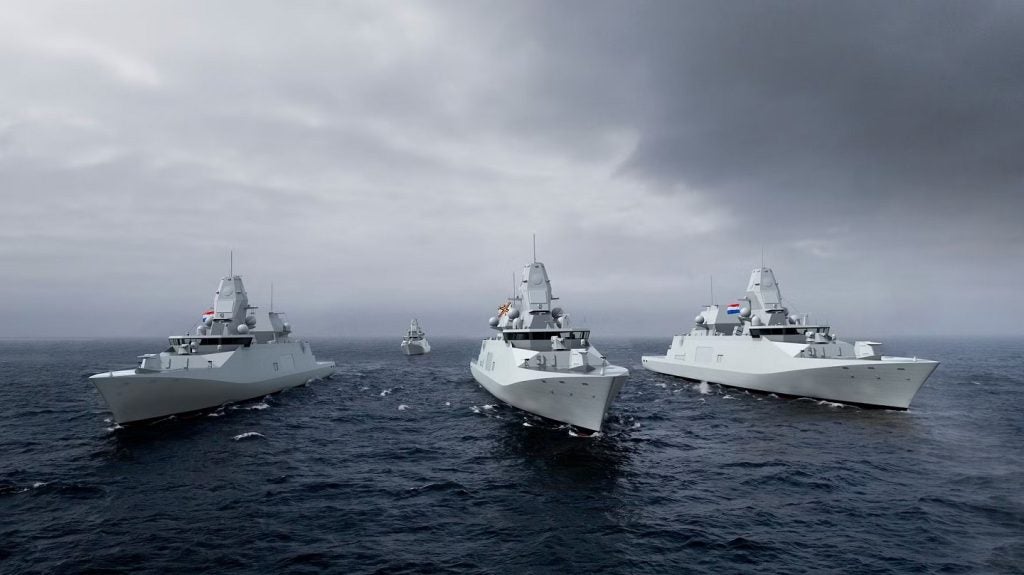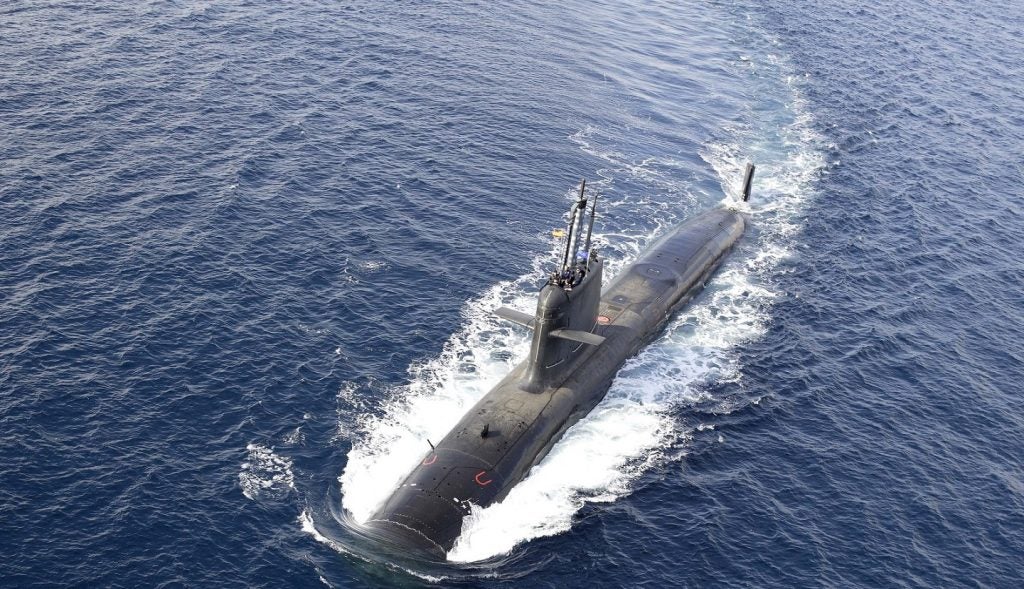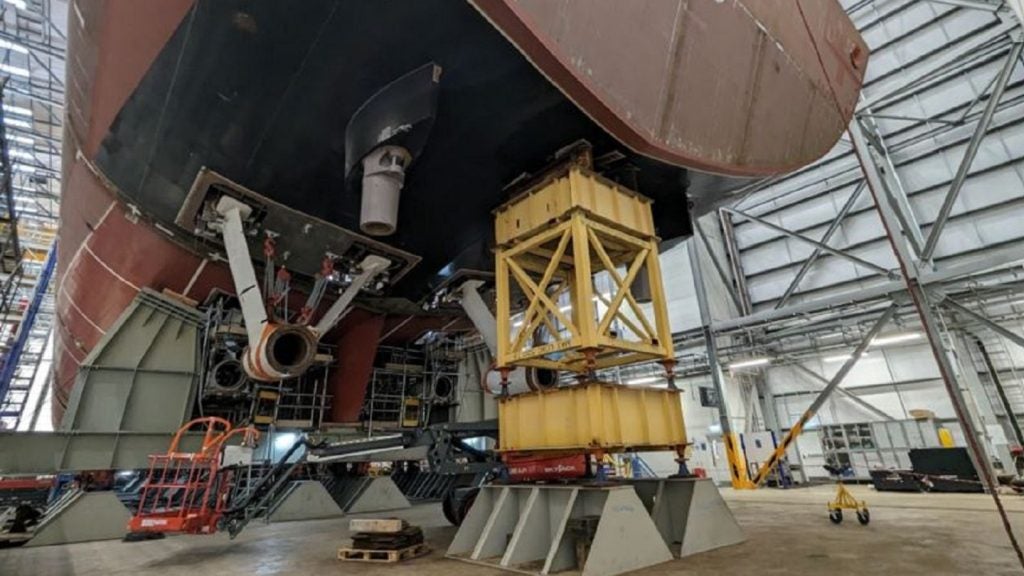

GD signs $17.6bn US Navy contract for Virginia-class submarines

General Dynamics (GD) Electric Boat has received a $17.6bn contract from the US Navy for the construction of ten Virginia-class, nuclear-powered attack submarines.
Under the multi-year block IV contract, Electric Boat and its industry partner Newport News Shipbuilding will build two submarines a year through to 2018.
With the construction on the first block IV submarine, SSN-792, scheduled to start on 1 May, the procurement of the tenth submarine is scheduled for delivery in 2023.
HMS Tireless tasked to support missing aircraft search mission

The UK Royal Navy’s third of the seven Trafalgar-class submarines, HMS Tireless, has arrived in the southern Indian Ocean to support the search for Malaysia Airlines flight MH370.
See Also:
The submarine will use its advanced underwater search capability to contribute to the attempts to locate the plane, which disappeared on 8 March.
How well do you really know your competitors?
Access the most comprehensive Company Profiles on the market, powered by GlobalData. Save hours of research. Gain competitive edge.

Thank you!
Your download email will arrive shortly
Not ready to buy yet? Download a free sample
We are confident about the unique quality of our Company Profiles. However, we want you to make the most beneficial decision for your business, so we offer a free sample that you can download by submitting the below form
By GlobalDataMeanwhile, the Royal Navy’s Hydrographic Oceanographic (SVHO) multi-role survey vessel, HMS Echo, will assist in the search for the transponder on the black box.
Raytheon completes passive-seeker test for Tomahawk cruise missile

Raytheon has successfully completed a passive-seeker test intended for the Tomahawk block IV cruise missile, marking a key milestone on the missile’s modernisation path.
Validating Raytheon’s self-funded multi-mission processor at technical readiness level six, the latest captive flight test paves the way for its engineering, manufacturing and development phase.
Test fired aboard a T-39 aircraft at subsonic speed and at varying altitudes, the missile’s nose cone was modified to equip the passive antennas with the new modular, multi-mode processor, which assists the missile in detecting and tracking radio-frequency-emitting targets.
Royal Navy and NOC to develop new strategy to deploy UUVs on warships

The UK Royal Navy has signed a memorandum of understanding (MOU) with the National Oceanography Centre (NOC) to develop a framework to enable unmanned underwater vehicles (UUVs) to be deployed from anti-submarine warfare warships.
Under the terms of the agreement, the Royal Navy and NOC will work together and share ideas to develop a new working strategy.
NOC National Marine Facilities director Geraint West said that the NOC will apply its capabilities and considerable experience in marine autonomous systems.
US Navy plans at-sea demonstration of EM railgun in 2016
The US Navy has outlined plans to deploy and test a prototype electromagnetic railgun (EM railgun) on-board a joint high-speed vessel (JHSV) in the fiscal year 2016.
The test, which is the first at-sea demonstration of an EM railgun, marks a significant advance in naval combat for the US Navy, as well as the latest in a series of technical maturation efforts intended to provide an operational railgun to the fleet.
Using an electromagnetic force known as the Lorenz Force, the EM railgun technology can rapidly accelerate and launch a projectile between two conductive rails.
Sikorsky demonstrates CH-53K structural strength
The US Naval Air Systems Command’s Sikorsky CH-53K Super Stallion heavy-lift helicopter has successfully completed an initial series of tests to verify its structural strength.
The tests, conducted on a full-size non-flying airframe, static test article, are part of a three-year programme aimed at demonstrating the structural integrity of the helicopter and its ability to operate safely over its entire flight envelope, from an empty-gross weight of 44,000lb up to its maximum-gross weight of 88,000lb.
Sikorsky CH-53K programme vice-president Mike Torok said: "The static test article will enable Sikorsky to replicate the many stresses, strains and aerodynamic forces the CH-53K helicopter will experience during all aspects of flight, whether the aircraft is empty, filled with cargo, or carrying up to 36,000lb of gear suspended beneath the aircraft by an external sling."
US Navy readies new laser-weapon prototype for at-sea testing
US Navy engineers are performing final adjustments to a new laser-weapon prototype that will be installed onboard an operational US Navy vessel for the first time later this summer.
The prototype, an improved version of the Laser Weapon System (LaWS), will be deployed on the US Navy’s Austin-class amphibious transport dock, USS Ponce, for at-sea testing in the Persian Gulf.
During tests aboard the Arleigh Burke-class destroyer USS Dewe, the LaWS system was successfully used against a surveillance drone and fast boats.
HMS Iron Duke’s new radar system fires missile for first time
HMS Iron Duke, the UK Royal Navy’s type 23 Duke-class ship, has successfully test fired a Seawolf missile from its Artisan medium-range 3D surveillance radar for the first time off the Dorset coast.
During the testing, the on-board radar tracked the sea-skimming target and then transferred the data to the Seawolf system to follow and shoot.
The missile was then launched successfully, blasting the object out of the Channel sky with a direct hit off the coast of Portland.
US Navy christens first Zumwalt-class destroyer
The US Navy has christened the future USS Zumwalt (DDG 1000) in a ceremony at the General Dynamics Bath Iron Works shipyard in Bath, Maine, US.
The lead ship in the navy’s newest and most-advanced destroyer class has been named to honour the former chief of naval operations (CNO) admiral Elmo R Zumwalt, who served as the 19th CNO from 1970-74.
US Navy secretary Ray Mabus said that the DDG 1000 will help shape the future of surface combatants, just as admiral Elmo Zumwalt helped shape the nation’s navy.
US Navy deploys Raytheon’s standard missile-3 block IB
The US Navy, in collaboration with the Missile Defense Agency (MDA), has deployed Raytheon’s second-generation standard missile-3 block IB for the first time, marking the beginning of the second phase of the phased adaptive approach.
This comes in the wake of the completion of the PAA phase I that started in 2011, when SM-3 block IAs was deployed aboard USS Monterey.
Raytheon Missile Systems president Dr Taylor Lawrence said that the SM-3 block IB’s completion of initial operational testing last year set the stage for a rapid deployment to theatre.







